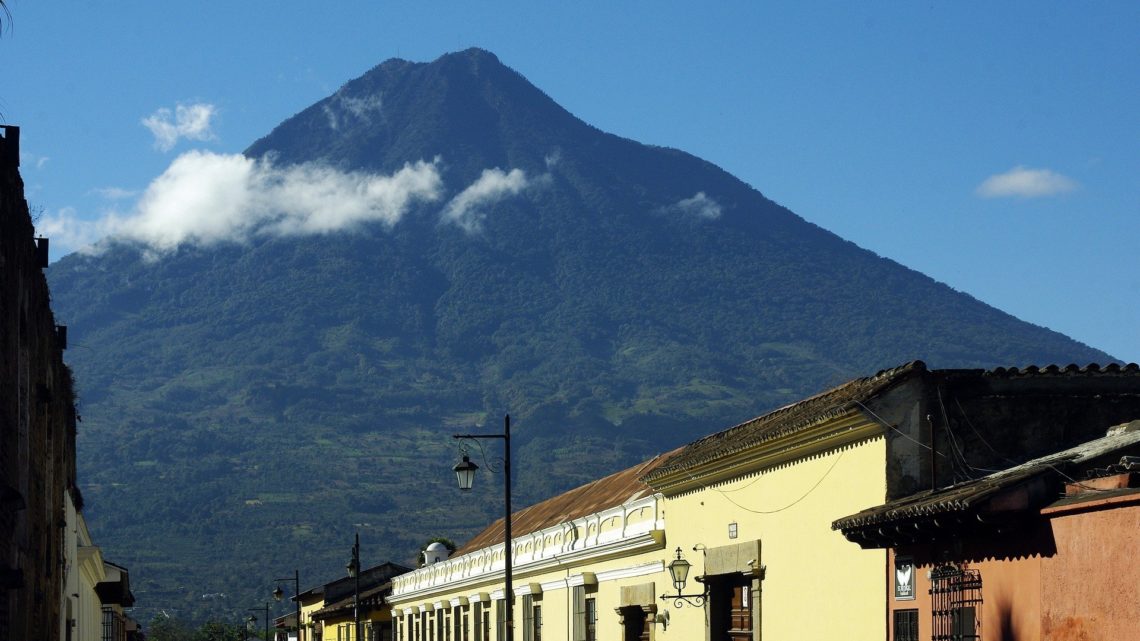The History of Guatemalan Rum

Guatemala is widely known not only for being the home of the earliest Maya civilization but also for its rums. The Centro American country has a long history of exporting sugar cane and a rum tradition of more than 100 years.
The origins of sugar cane in the country dates back to the sixteenth century when Christopher Columbus brought the first plants to the new continent. After the conquest, the sugar cane began to be cultivated in 1536 in Amatitlán.
The beginning of the production of sugar involved learning how to cultivate it and the construction of sugar mills for its processing and refining. In the mid-seventeenth century, Maya peoples in highland Guatemala developed new techniques and incorporated sugar into honey-based alcoholic drinks by building upon the pre-Hispanic production of fermented beverages from honey, maguey cactus, and maize.
Let’s start to learn more about the history of Guatemalan rum.
Table of Contents
- The first mills or trapiches in Guatemala
- The women’s role in the alcohol industry
- The beginning of aging
- The Guatemalan rum’s soul
- Industrias Licoreras de Guatemala
The First Mills or Trapiches in Guatemala
The first mills or trapiches in Guatemala were founded in the central valley and the Salamá Valley during this century. Some historians assure that by 1587, there were already several sugar mills in the country, although some others argue that the first mill was documented in 1591.
By the beginning of the eighteenth century, it took place the transition from the production and use of primarily fermented alcoholic beverages based on maize, maguey, or honey to the dominance of distilled liquor made from sugar cane. Indeed, in 1755, the trade of sugar cane liquors officially began, when Santiago de Guatemala obtained the right to sell to all the provinces of the Kingdom of Spain in America.
In this context, the number of mills grew considerably. Likewise, with the introduction of the distilling process, alcoholic drinks became cheap, plentiful, and more potent, which makes them the addictive drug of the working-class masses.[1] Therefore, the demand for panela (brown sugar) and cane liquors increased that much that innumerable sugar mills were built in all the warm climate regions of the country.
This, of course, had a powerful impact on the development of Guatemala. The synergistic relationship between the aguardiente and sugar industries became the motor force of the local economy in many rural areas.
In this sense, for some historians, the presence of hand-mills in the indigenous operations in Pétzal in the western Huehuetenango region and the prevalence of sugar-processing technology indicate that some aguardiente was being produced by Maya peoples in the late eighteenth century, although on a relatively small scale.[2] Here, the concept of “aguardiente” refers to rum or liquor made from molasses.
As the American historian, David Carey Jr., stated: “alcohol provides a window into the broader history of Guatemala.” As a commodity that was produced and consumed locally and often illicitly, aguardiente was frequently at the center of economic, political, and social conflicts within and between local communities and between communities and the state. The proceeds from alcohol manufacturing also filled government coffers, fueled local economies, and fortified family livelihoods.[2]
The Women’s Role in the Alcohol Industry
The history of Guatemalan Rum also involves local women. There is some documentation from the 1850s that describes people who had been fined or imprisoned for producing or selling “aguardiente clandestine” (clandestine rum), and most of them were women.[2]
In the nineteenth century, the economic and political impact of women and alcohol was imminent. Combining their traditional roles as merchants, tavern owners, and producers with the profitability of aguardiente, Guatemalan women advanced their class position, influenced national identity, and pressed for their emancipation.
Like those in Peru, Bolivia, and Mexico, indigenous women in Guatemala were the center of the alcohol economy even before the Spanish invasions. Pre-Hispanic Mesoamerican women contributed significantly to the domestic economy as producers and market vendors of fermented drinks.
What is more, in 1608, the Crown recognized the gendered and ethnic components of alcohol sales when it ordered that “only one respectable old woman be licensed to sell pulque for every one hundred Indians.”[2] Pulque is a milk-colored and viscous alcoholic beverage made from the fermented sap of maguey.
During the emergent modern economies of the nineteenth and early twentieth centuries, Guatemalan women increasingly turned to aguardiente production and sale over the course of the colonial era, becoming more involved in the industry.
The Beginning of Aging
The Guatemalan rum industry finally developed in the twentieth century when Spanish families immigrated to the country and brought their knowledge of distillation with them. One of these families was the Botrans, who emigrated to Guatemala from Spain. Almost immediately, the family began making rum on a small scale and in 1940, joined forces with other family distillers to establish the Industrias Licoreras de Guatemala (Guatemala Spirits).
By 1946, to improve the quality of existing products, the Government of Guatemala issued the Law that obliges rum distillers to age for one year before going on sale. So, they had to create reserves to be able to sell in the future. This is how the tradition of aging began.
One year later, the National Association of Manufacturers of Alcohol and Liquor (ANFAL, by its acronym in Spanish) was born. This is an independent association that brought together producers and manufacturers of alcoholic beverages in Guatemala.
The historians marked 1948 as the beginning of the modern era of rum production along with the growth of the Agroindustry. At that time, scores of distilleries in the various Guatemala districts were producing rum, although, it was just for the local market.
On September 17, 1957, the directors of the Guatemalan sugar mills created the Guatemalan Sugar Association or the “Asociación de Azucareros de Guatemala” (ASAZGUA), an entity that became the cornerstone of the development of the national Sugar Industry. This was established with the purpose of solving problems in sugar cane production and developing programs to promote, improve and introduce modern technology in the sugar cane industry.[1]
At that time, the industrial era was quickly developing and the world dynamics were changing. As the world price of sugar rose in the 1960s Guatemala’s sugar factories were updated and new state-of-the-art factories were built. The education of sugar cane technicians in universities started in 1975, making it possible for new professionals to take important positions in the sugar mills.[1] This is how the modernization of the Guatemalan sugar cane Agroindustry began. In these circumstances, Ron Zacapa was created one year later.
For centuries, sugar cane was cultivated and processed by hand. Eventually, the rum industry transformed from a local to an exporting industry, becoming one of the most important agroindustrial activities of the country. More than seven decades of hard work allowed the sector to position itself worldwide due to its quality, efficiency, and innovation.
Denomination of Origin “Ron de Guatemala”
Since 1990, the sugar cane industry reached a position internationally, and Guatemala was situated among the tenth most important countries in export volume, according to the International Sugar Organization (ISO), and it was well positioned in productivity, according to LMC International.[1]
In 1992, it was born the Guatemalan Sugarcane Research and Training Center (CENGICAÑA, by its acronym in Spanish), aiming of studying and developing new varieties, integrated pest management, soil quality, and efficient processes for growing sugar cane and producing sugar for profitable and sustainable development, what brought considerable benefits to the rum industry.
Later in the 1990 decade, the Guatemalan rum started to receive world recognition by winning international awards in different competitions. For instance, in 1998, Zacapa rum became the first Central American spirit to win the International Rum Festival, a prize that was obtained four times consecutively.
In 2010, the Denomination of Origin Ron de Guatemala was approved by the Intellectual Property Registry of Guatemala, recognized in more than 29 countries. In 2014, the European Union also recognized it, obtaining the first stamp in its category.
Guatemala Spirits is also the first rum production chain in the world to have a sustainability seal through each of its operating units. In 2011, Botran rum received the ISCC seal of sustainability certification given by the International Sustainability & Carbon Certification Association.
Later on, in 2017, it obtained the ISCC Plus a certification that guaranteed that the whole production chain — not only the rum production but also the sugar cane cultivation — complies with all the established standards and evidence of respect for biodiversity, the environment, and human rights.
The Guatemalan Rum’s Soul
Guatemalan rum production is based on the unique characteristics derived from the cultural influence and the diverse typography where it is produced. It is one of several countries in the area to have coasts on two sides with the Pacific Ocean to the south and the Caribbean Sea to the northeast; it has the highest and most active volcanoes in this part of the world, which are responsible for valleys that overflow with agricultural products and offer little respite from the tropical humidity. In addition, Guatemalan has inseptisol and vertisol soils, which are only found in 2% of the earth’s surface.
Hence, sugar cane grows on 3,200 hectares located in fertile coastal plains on the South Coast of the country, in the departments of Retalhuleu and Suchitepéquez, within the heart of the sugar cane zone, an area legally recognized as part of the Protected Designation of Origin (PDO). It is important to highlight that the productive area of the PDO endorses the quality by specifying the geographical location, variety of sugar cane, fermentation, distillation, and production processes including the climatic conditions under which aging should occur.
To be labeled rum in Guatemala the spirit must be distilled from fermented “virgin sugar cane honey”, while molasses is distilled to make aguardiente and other spirits such as vodka. Sugar cane honey is a concentrated syrup obtained by filtering fresh sugar cane juice, and boiling off the water until the syrup contains about 72% sugar.[3]
The sugar cane honey is fermented in large tanks from 110 to 120 hours with yeast cultivated from the pineapple fruit. The spirit is then distilled in pot stills of 23 meters tall configured as two columns. The column itself is made of stainless steel with copper trays and a copper condenser to enhance the separation of alcohol and the sulfur and other compounds produced in the fermentation. The distillation is to a modest 88 – 92% ABV.[3]
After distillation, rum must be aged in oak barrels for at least one year at only 60% ABV. Some spirits are aged using the Sistema Solera, a dynamic process in which rums of different ages and properties are blended and subsequently stored in white oak barrels, toasted barrels, and barrels that have previously aged different types of wines, where maturation continues.
The aging warehouses are at more than 2,300 meters above sea level, where temperatures are cooler and more consistent during the year, a key factor for a slow aging process. This method called “high rum” has been used for decades and it allows them to create a complex and unique flavor. The preparation of the oak barrels is also an art, which includes the assembly of the wood and the internal burning.
Sugar cane and the rum produced from it are some of the main exports in Guatemala. The cultivation of cane is in fact one of the most important economic activities and sources of foreign exchange nowadays and it has been transcendental in the history of the Guatemalan industry.
Industrias Licoreras de Guatemala
Currently, the largest distillery operating in the country, Industrias Licoreras de Guatemala, uses sugar cane syrup from the Tululá Sugar Mill to produce rum, and molasses from local sugar mills to make aguardiente and other distilled spirits. Ingenio Tululá is located in the department of Retalhuleu. It is dedicated to the sowing, cultivation, cutting, and grinding of sugar cane.
Industrias Licoreras de Guatemala is a company that has evolved through the consolidation of the sugar cane spirits industry over the last 75 years. Its main family rums, Botran and Zacapa, have contributed to developing the nation’s rum reputation worldwide.
According to the last Sugar Annual Report published by the United States Department of Agriculture, at present, the sugar industry in Guatemala produces 82% sugar, 13% alcohol, and 5% molasses. Moreover, the five distilleries in existence are producing ethanol based on molasses.[4]
References
[1] Guatemalan Sugarcane Research and Training Center. (2012). Sugarcane Crop in Guatemala. Melgar, M.; Meneses, A.; Orozco, H.; Pérez, O.; and Espinosa, R. (eds.). Librerías Artemis Edinter, S.A., Guatemala.
[2] Carey Jr, D. (2012). Distilling the Influence of Alcohol: Aguardiente in Guatemalan History. University Press of Florida.
[3] Ministry of Rum. (2010, July 31). Industrias Licoreras de Guatemala. Ministry of Rum. Retrieved September 2, 2021, from http://www.ministryofrum.com/producerdetails.php?t=126
[4] Tay, K. (2021, April 21). Sugar Annual, Guatemala. United States Department of Agriculture, Report Number: GT2021-0011, 1-10 pp. Retrieved September 2, 2021, from https://apps.fas.usda.gov/newgainapi/api/Report/DownloadReportByFileName?fileName=Sugar%20Annual_Guatemala%20City_Guatemala_04-15-2021.pdf
Thanks for reading us, we invite you to share this content on your social media accounts.
Featured image: Dezalb / 5089571 / pixabay.com












